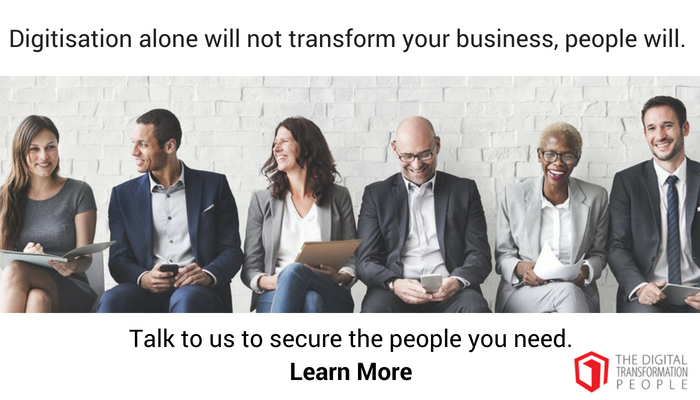One of the most famous quotes in business and the core sentiment is as true today as it has always been. “The customer is always right.” ~ Harry Gordon Selfridge. The only difference now is how to deliver it, because today’s rapidly evolving digital environment is causing a radical shift in customer behaviour.
This, in turn, is challenging the way organisations must operate to deliver the kind of experience their customers need and frankly deserve.
Today, customer-experience now runs the show. Never before has:
- It been easier for a disgruntled customer to let his/her feeling be known. That’s the power of social media and the review systems.
- There been so many points of reference to influence their buy decisions. Research from McKinsey highlighted it is now 20 – up from 5 a mere five’s years ago.
- The customer been more demanding. For an instant response, relevant and personalised, whatever device they use, across the whole experience.
That’s tough for incumbents to adapt to, but businesses who want to survive in this environment better wise up, because they do need to change to remain relevant, fend off disruption and innovate.
This is why customer experience-led change is imperative, and in this blog, we are going to share in detail an approach that is both tried and tested.
What we will cover:
- How the customer-experience landscape has changed.
- Why many organisations are so poor at it.
- A customer experience-led approach: What are the benefits?
- How should I approach developing a customer experience led strategy?
- A framework approach to designing and delivering a customer experience-led strategy as part of your wider digital change remit.
1. How the customer experience landscape has changed.
Digital has been a catalyst to make today’s customers more demanding than ever.
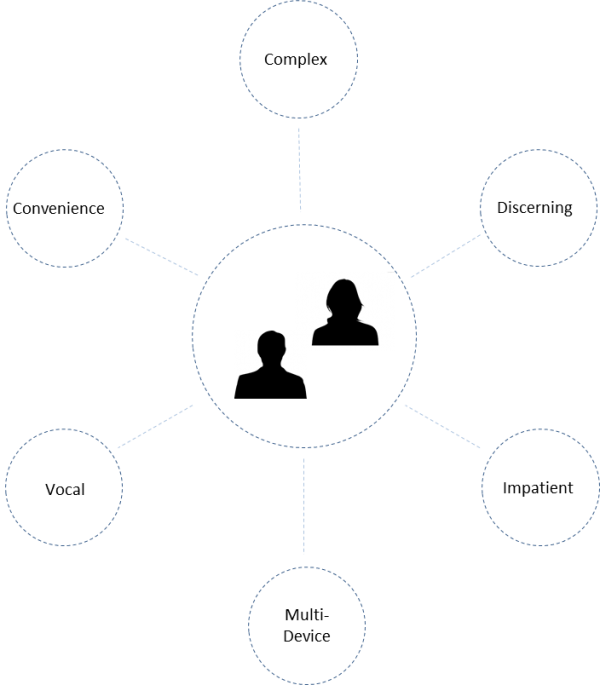
Convenience:
Customers today expect highly convenient and relevant experiences. This means being able to offer services across multiple devices and platforms, and a blended on and offline experience. This also relates to how customers can research, pay, receive and return their goods.
- 60% of leading brands have invested in technology that connects their digital and offline/in-store experiences. [Source: Econsultancy/Google, May 2017]
- Globally, 64% of brands do not enable customers to choose their delivery day or timeslot and 61% of brands don’t offer online chat options for customer service. [Source: IBM, May 2017]
- One in three consumers who purchase items online has opted to ship-to-store for pickup at some point. [Source: UPS, February 2015]
Complexity:
Today, there is considerable complexity when it comes to how people research and buy goods and services. There are multiple points of influence, an explosion of product choices and digital channels to choose from. Customer’s tastes are becoming more varied, flexible, and demanding, making markets highly segmented.
- Three years ago the average points of influence in the buy cycle was 5. Today it is 20. [Source: McKinsey]
- Globally, 55% of marketers consider managing the complexity of the digital landscape as the primary obstacle to delivering a consistent customer experience across physical and digital touchpoints. [Source: The CMO Council, August 2017]
- Globally, the complexity of customer experience is the biggest technical barrier to building an overall view of the customer journey. [Source: Econsultancy, March 2017]
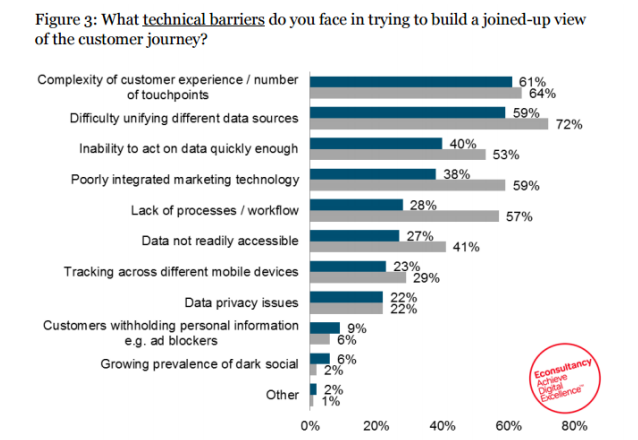
Discerning:
The traditional ‘push’ approach to marketing is being replaced by a ‘pull’ approach. Digital channels are empowering consumers, and they are becoming increasingly discerning and savvy – and less trusting of brands.
Customers now can make highly informed decisions and then share their experiences. Delivering a positive end-to-end experience is critical to a business’s future growth.
- 65.8% of UK consumers say the quality of customer service would be a key factor for
recommending a service to a friend. [Source: Engine Group, August 2017] - 70% of UK consumers feel the best brands are the ones that pay closest attention to their needs. [Source: Ricoh, May 2017]
- 73% of UK consumers say they are put off a company due to poor customer service. [Source: Salesforce, May 2017]
[Source: IBM, February 2017]
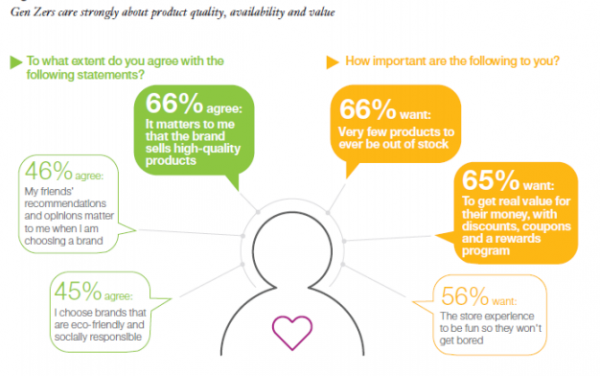
Vocal:
Consumers have never been so vocal – with the ability to give and receive peer reviews and share their experiences both positive and negative. Social media can make or break brands, so getting it right is essential.
- 78% of UK adults say they use social media to post comments or share videos and photos and 32% of UK adults say they have shared opinions with strangers on social media sites. [Source: Ofcom, June 2017].
- 40% of UK adults say it is very/somewhat important that companies they purchase from have a strong social media presence and 56% of respondents in the UK agree that customer service via social media has made it easier to get questions and concerns resolved. [Source: HootSuite, November 2016]
- 56% of online shoppers in the US and Europe say that pictures and videos from other shoppers give them the most accurate depiction of the experience they can expect from a brand. [Source: Bazaarvoice, August 2017]
Impatient:
We are more impatient than ever. We want to find things quickly and hop between multiple channels. All with a seamless, easy to navigate experience.
- After waiting 3 seconds, 57% of customers will abandon an online site. [Source: eMarketer]
- Globally, 60% of Gen Z-ers are not willing to use an app or website if it is too slow to load. [Source: IBM, February 2017]
- 47% of consumers in the UK, the US and Australia say the ability to find and buy what they need quickly is the most crucial contributor to a great online experience. [Source: Cloud IQ/Insight Avenue, October 2017]
Multi-device:
Ecommerce and in particular m-commerce continues to mushroom. Smartphone penetration in the UK adult population has now risen to 85% as of mid-2017, compared to 52% five years ago [Source: Deloitte Global Mobile Consumer Survey, 2017]. Consumers expect to switch between channels and receive the same level of service, experience and convenience.
- 27% of retail sales now take place online. [Source: IMRG Capgemini e-Retail Sales Index]
- Across the EMEA, 52% of consumers say they switch devices while researching online. [Source: Adobe, May 2016]
- The Average UK home has 8.3 connected devices [Source:The Internet Advertising Bureau (IAB) UK]
2. Why are many organisations so poor at it?
Not all are – some are great – but these tend to be smaller or younger organisations. Moreover, therein lies many of the clues – size, age and complexity.
The larger more complex organisation
In such organisations, the customer experience is managed by many different departments. Often operating in silos, targeted to drive efficiencies within their bubble and losing sight of the customer; ironically the one who ultimately pays their wages.
These organisations are often constructed into deep verticals, with the customer moving horizontally between them. No one looks at the end-to-end experience, and so the customer gets a ‘jarring’ experience as he or she transverse from one silo’d vertical to another.
Customer interactions pretty much touch every part of a business and are managed across multiple business ‘functions’ (as the diagram below demonstrates).
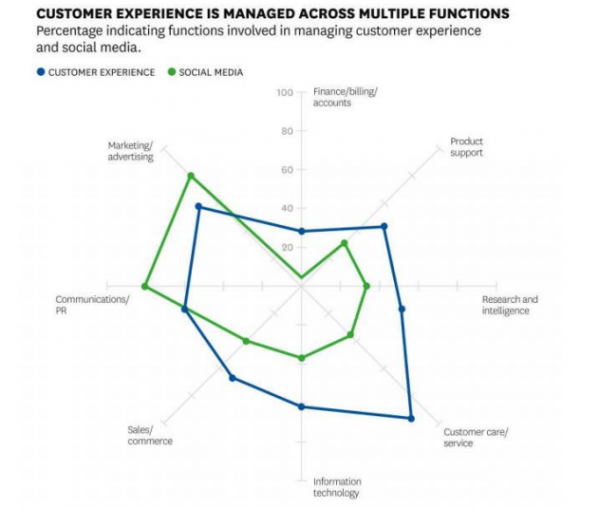
So, a critical behavioural shift in the organisation is to plan primarily from the customer’s viewpoint, rather than be ‘selectively’ process improvement driven. This is fundamental to success. It should include customer experience across all channels and also regarding data and information (analytics, insight, financials, KPI’s), technology and systems (ops, business, automation, HR), and product (supply, logistics and warehousing).
Digital Immaturity
This core organisational issue is often exacerbated by the fact that the company has a lack of digital skills and experience to be able to affect the right addition of digital into the mix. Meaning the digitally adoptive customers gets an even worse experience.
What would Harry say?
3. A customer experience-led approach: What are the benefits?
A focused customer experience-led approach will enable you to differentiate yourself from your competition, help foster brand loyalty and lead to a stronger financial performance, because customers, not only demand better experiences, they are also willing to pay for it:
- Globally, 81% of consumers are willing to pay more for a better experience. [Source: Capgemini, June 2017]
- Globally, 20% of consumers stopped buying from a retailer with whom they had a negative experience. [Source: Capgemini, June 2017].
“From a customer experience perspective, we made the mistake of not putting all our products online. Not available instore and then not available online, a very negative reaction.” Head of Digital, Selfridges (2016)
Another major benefit at looking at your business from a customer-centric perspective is that you start to develop a customer model, one that leads the many other areas of the business; go-to-market, commercial, operational, organisational, technical/data and corporate. Providing a guide, trigger and purpose for a wider, stage-two, end-to-end business transformation.
4. How should I approach developing a customer experience led strategy?
While Harry was right with his sentiment, the reality is – shock horror – that the customer is not always right. Otherwise, we would all be driving that Ferrari that we asked for!
However, making it easier for a customer to buy, remain with you, and say nice things about their experience – within the strategic constraints of your business – has got to be THE aim. This was Harry’s sentiment.
In fact, by ensuring any necessary changes are prioritised to the customer and your business model, you guarantee the most impactful/simple changes can be made first, aligned to both parties’ interests. So you can make more money – generating momentum – and keep doing them. This allows you to move to the next priority set, which is important for the customer, but just harder to achieve. This order makes practical, pragmatic sense.
Unfortunately, while business leaders often understand the business need, very few have begun to map out and prioritise in any detail their own customer’s journey, or develop a customer experience-led strategy. This is often due to the complex nature of this work, especially when digital is thrown in.
However with a framework methodology in place, it is possible to follow a logical process to develop a better understanding of your customer needs and create a strategy that will place your customer at the centre of how you operate.
By balancing strategic clarity and executional excellence, you will achieve digital-led success, which grows and protects your business.
5. A framework approach to designing and delivering a customer experience-led strategy as part of your wider digital change remit
A clear customer experience-led approach is a critical strategic success factor within our wider digital change framework (illustrated below). This framework provides a blueprint to successfully effect business change from a 360-degree view, enabling you to develop the right vision, structure, processes, and resources to change.

The key elements addressed as part of the customer experience methodology are:
- Evolving to a customer-centric design, developing an end-to-end customer experience through the full buy and usage –cycle.
- Developing personalised, relevant, insight-driven experiences, following a pattern of: awareness > conversion > upsell> cross-sell > advocacy.
- Tying developments to your business model, to help prioritise and roadmap for the interests of both parties.
- Being aware of the ‘business framework/capabilities’ you need to develop to move to and maintain such a cultural and business shift.
Our approach follows a clear path of logical stages allowing a business to gather the right insight, make informed decisions and develop and execute the right, flexible change plan.

Which translates to this detailed, end-to-end, approach:
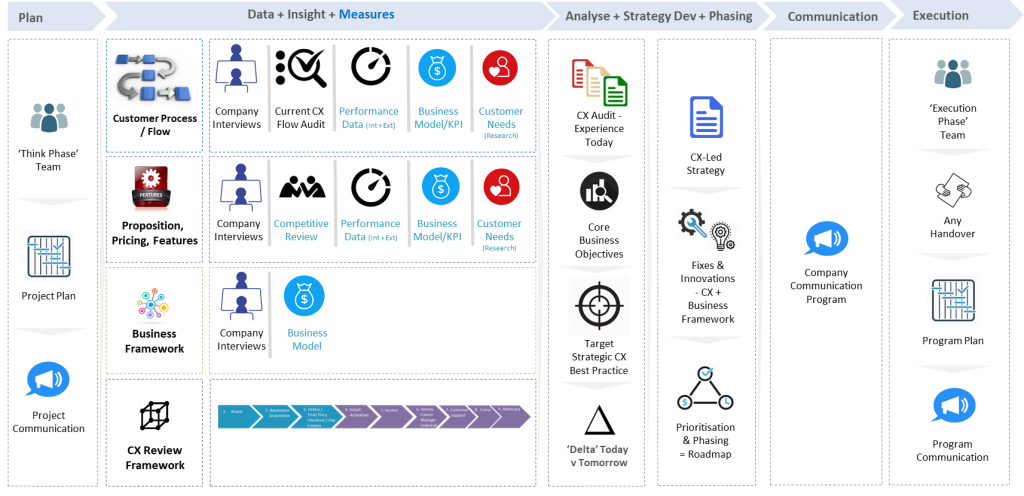
A. Planning phase
Upfront is the need to inject delivery control of the initiative, helping investment, expectations, and time control.A clear project plan is developed where detailed activity is identified and mapped out.
You need to treat the plan with all the rigour you would do for example with an IT project. Working out all of the actions needed, against the methodology and who will do them. From hard actions, such as who is doing the insight analysis, down to who is going to be the primary communicator? Key to this is choosing the right people within the ‘think team’.
You will also need to work out what types of insight makes sense, and to look at it from a number of perspectives; although it is a customer experience-led approach, you can’t get away from the needs of the company or ignore what the competition is doing.
What you are doing for the customer should be right for their needs and means that you differentiate from the competition, but it needs to be appropriate, feasible and acceptable for the company’s business model.
Finally, you need to meet regularly and communicate out to the core and wider team. You need to develop buy-in during this process – because it is inevitably going to turn into a change management exercise.
Example activity plan:
- How long will it take?
- Short-form RACI (responsible, accountable, consulted and informed)
- What are the reporting methods?
- What will be the reporting frequency?
- Stakeholder map: who should be involved?
- Core success factors/KPIs identified
B. Data + Insight + Measures phase
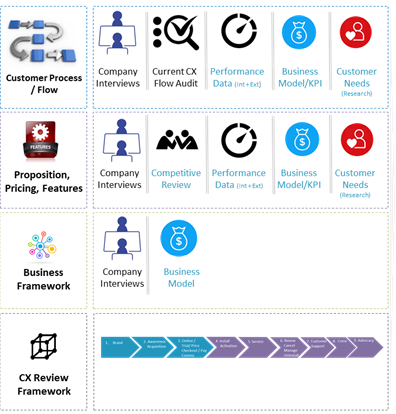
The output of this phase will allow you to form a very clear picture of how things happen today, so you can work out what exactly you need to change.
Are you doing the right thing? Do you have a clear differentiation point within brand compared to your competitors? Moreover, are you solving those customer needs and positioning appropriately?
You do this by gathering existing insight through a variety of means and augmenting any gaps with the development of a research brief. These can include:
- Insight interviews/existing sources
- Auditing the existing customer experience
- Establishing new and existing customer’s needs
- Competitor review and benchmark
- Non-competitor benchmark
- Performance data – KPI’s
- Operational environment
All the data and insight needed to help you establish:
- What is your ‘strategic best practice customer experience’ target for those customers you want? (Which isn’t always with the words ‘world-class’ attached to them).
- How are you performing today?
- What do you need to do to the capabilities of your business to allow you to get to your target and remain there?
C. Analysis & strategy development and phase
Next, you will need to develop an analysis framework and create a detailed customer journey map using the outputs and insights you have gathered, essentially bringing it all together.
The analysis will allow you to develop a 360 degree understanding of what your customer experience is today.
By then looking at your core business objectives and ‘target strategic best practice customer experience’ you can start to compare two things – your target for tomorrow and where you are today. Giving you the ‘delta’ – a set of activities across the business processes that you need to shift.
This is about developing an appropriate strategy to bridge the gap, for your customers and the business, taking into account the business model needs and what is realistically achievable.
You will probably also need to change some of the models in your business. This is the business framework stuff. You need to start to think about what the organisational structure is, what the communication processes are and the technology platform model that you need to go to.
To recap:
- Being clear on what your core business objectives are.
- Conducting a CX Audit – what is the experience today? Look at this against customer and business model needs.
- Establishing what the ‘target strategic best practice customer experience’ is; a “benchmark” customer journey map.
- Looking at today v tomorrow – to establish what is the delta?
With this gap, you can then prioritise the recommendations and a road-map built for both fixes and innovations.
You can do it quickly, or you can do it in strategic stages. For example, you would do your existing product ‘fixes’ first (those customer irritating, easier to do actions), then move on to ‘enhancements’. Containing not only ‘Customer flow and features/proposition elements’, but also identifying changes to the business framework.
- Cost-benefit analysis
- Recommendations per area, per customer/device types
- Operational change
- Roadmap
- Budget
D & E. Communication and execution phases
After creating your strategy and roadmap, the communication out to the business is critical, as with any change programme.
You need to start to socialise it into the two main groups; to the senior team to get their buy-in, and secondly what we term the ‘fix group’ who are the team who are going to go away and execute it.
Ideally, a number of the ‘think’ team should go across to the execution team so you have the consistency needed.
From here you need a great execution programme plan, controls and communication to make it happen in practice.
Strong communication is absolutely critical to make it work.
And with all this in place, you are well on your way to make this critical change in the right way.
We hope this top-level review has been useful for you.
We have done this a number of times for B2C and B2B organisations; transactional, subscription or performance-based business models. Using this proven approach as the core.
Article by channel:
Everything you need to know about Digital Transformation
The best articles, news and events direct to your inbox
Read more articles tagged: Customer Centricity, Customer Experience, Customer Journey, Featured




